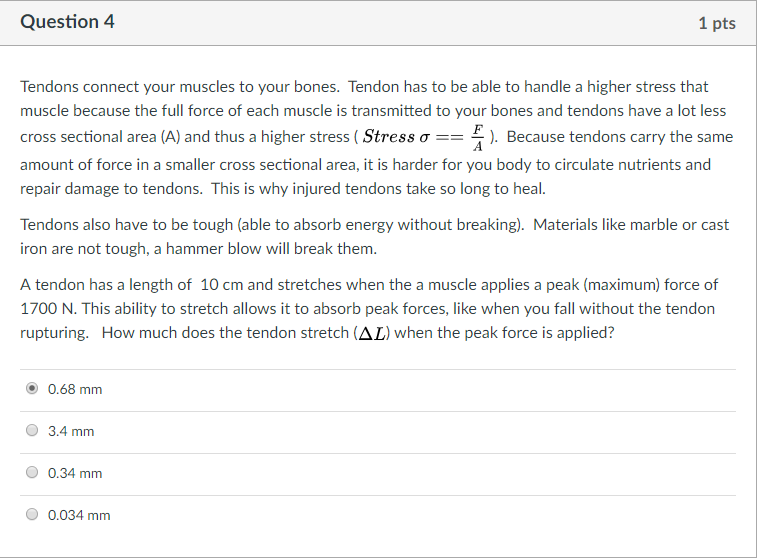Any physics expert online? See the attachment below.

1 Answer
There is missing information in the question about quantitative physical properties of tendons.
We have two ways to make an assessment about elongation of tendons under stress.
- Modulus of elasticity.
A thin rod of length#L_0# having area of cross section#A# is stretched through length#\Delta L# when a force#F# (tension) is applied parallel to its length.
We know that modulus of elasticity#Y# is given within elastic limits as#Y=F/A L_0/(Delta L)#
There is not information about#Y and A# of tendon. - Hook's Law: For for small deformations, the size of the deformation is proportional to the force. Mathematically,
#F=-kDelta L#
where#k# is characteristic of object. In the question there is no information about#k#
We know that most materials return to their original lengths if the deformation is less than about
Inserting given value we get for
- Most materials
#(DeltaL)/L_0=1/1000xx100=0.1\ mm# - Wrist tendon
#DeltaL=170xx2.4/100=4.08\ mm# , (Actual#L=17\ cm# ) - Achilles tendon
#DeltaL=290xx6.2/100=17.98\ mm# , (Actual#L=29\ cm# )
We also know that wrist tendons are capable of taking forces of the order of#50\ N# , whereas Achilles tendon can absorb forces as high as about#5\ kN# .
Keeping this view I would like to choose answer as
